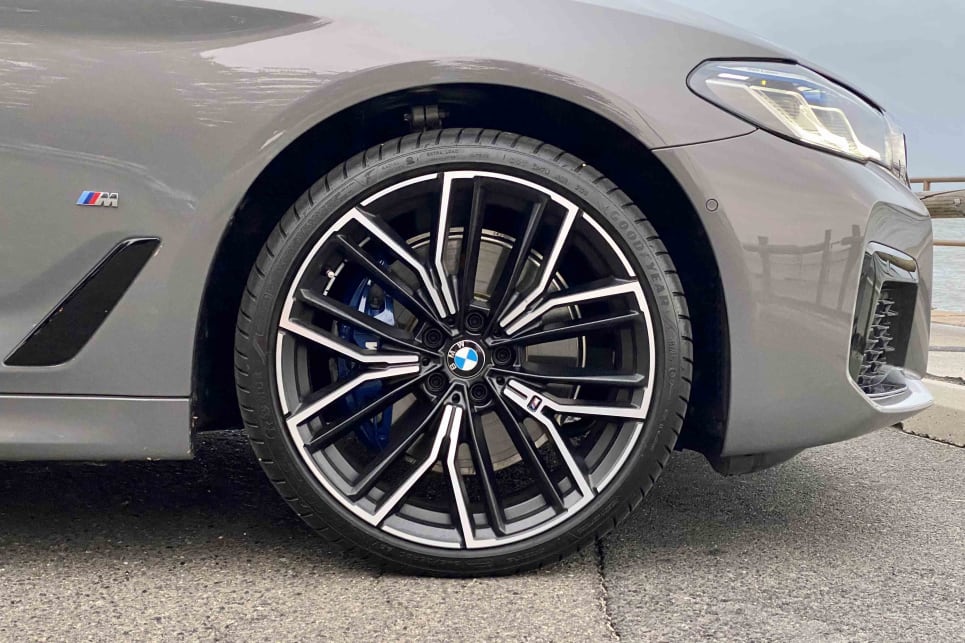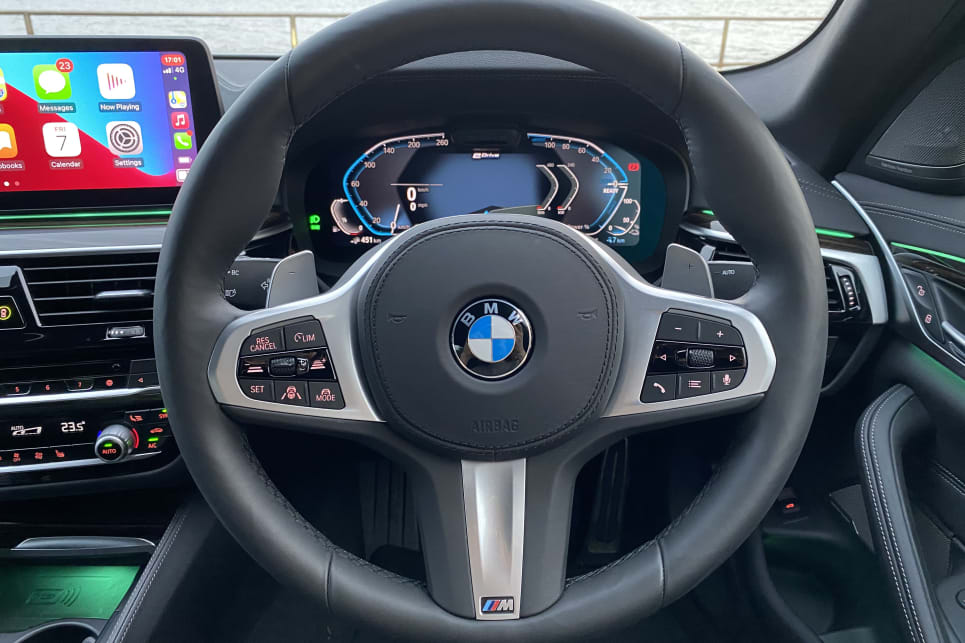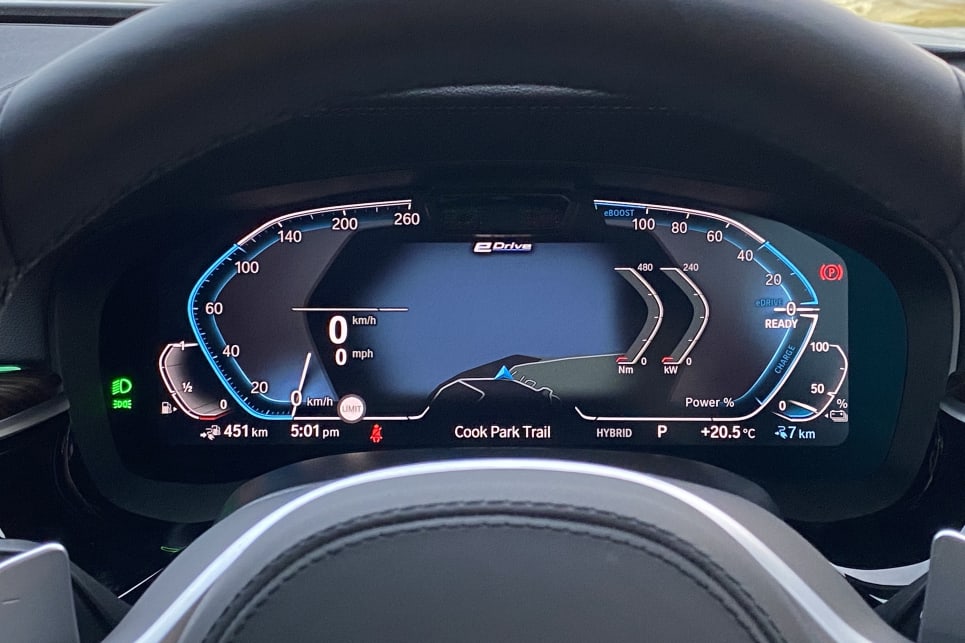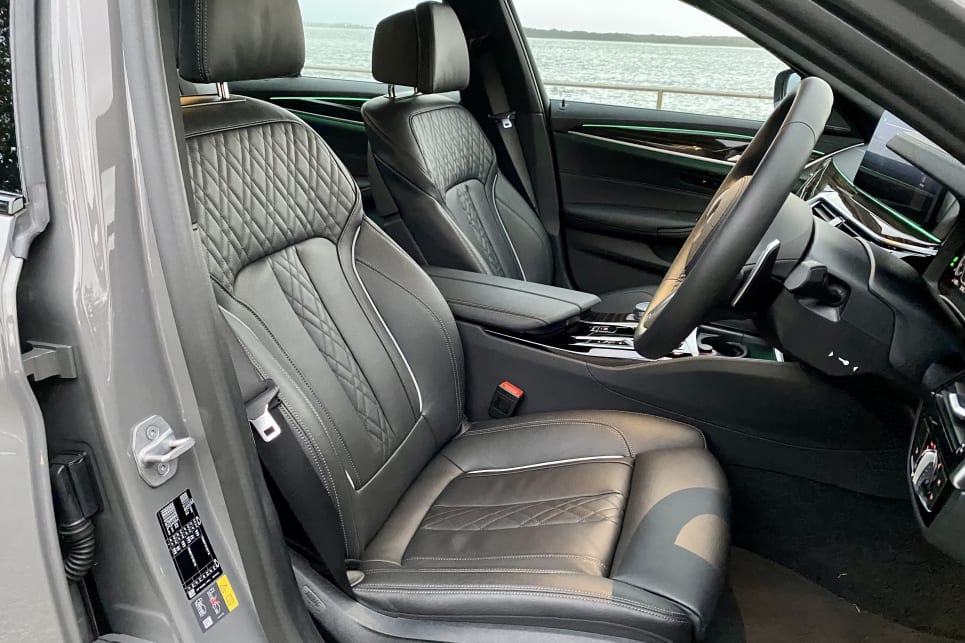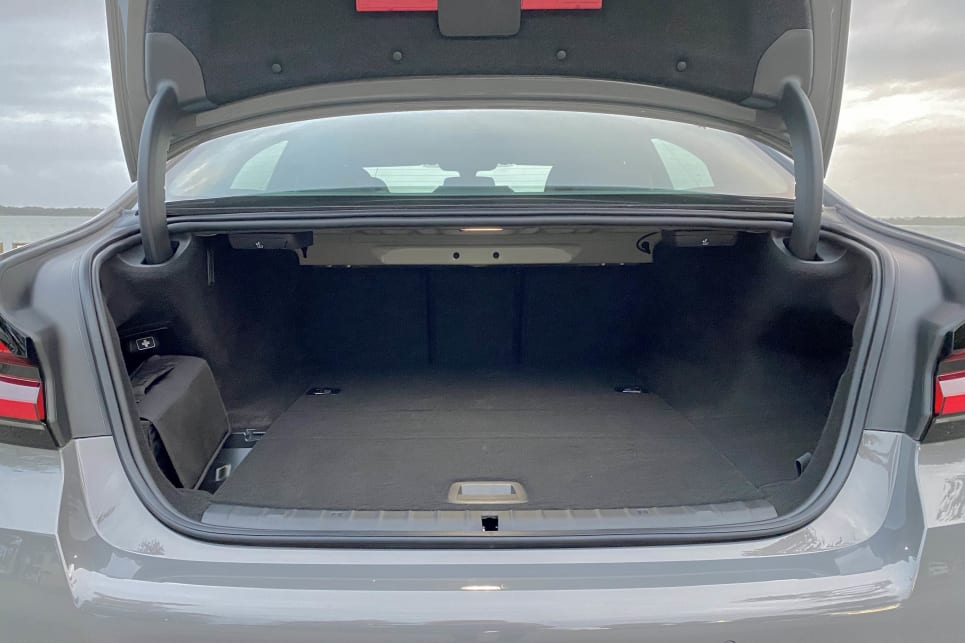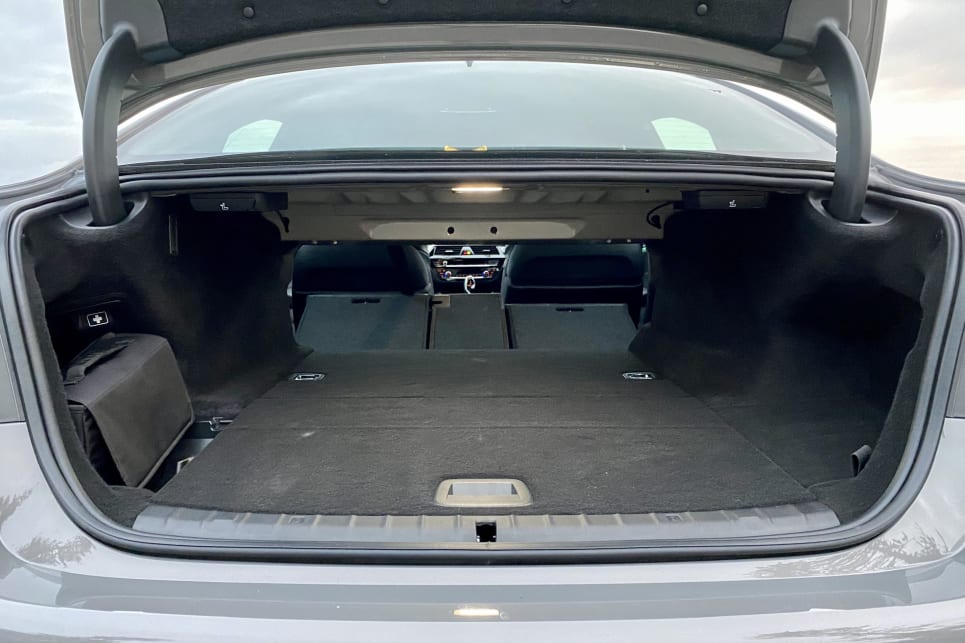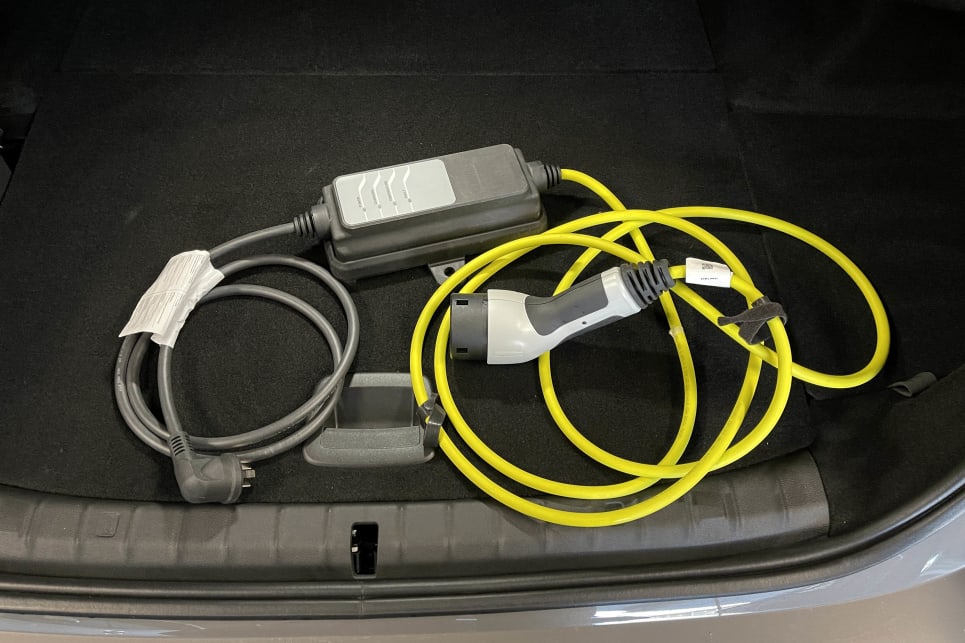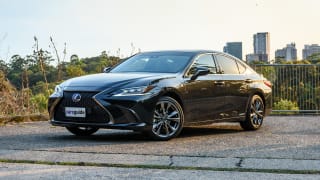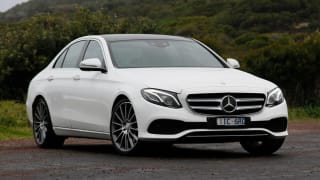The 530e sits almost smack-bang in the middle of a still reasonably extensive 5 Series range. While you can have an "entry" level 520i for $99,900 (before on-roads), the 530e lands at $122,900 (before on roads), which itself is $3000 more than the 530i, and the same amount less than the NSW cops' favourite, the 530d.
Given the price, you'd expect some gear and boy howdy does BMW deliver. You get 19-inch alloys, a 16-speaker stereo, multi-zone climate control, ambient LED lighting, reversing camera to go with the front and side cameras, keyless entry and start, electronic dampers, active cruise control, electric and heated front seats, sat nav, auto LED headlights, heat-insulated glass, head-up display, a mostly real leather interior, auto parking, auto wipers, digital dashboard, wireless charging and run-flat tyres.
The huge touchscreen on the dash runs BMW OS7, which accepts inputs via touch, the console-mounted rotary dial and (optional) various hand wavey-movements. The speakers have harmon/kardon badges on them and there is DAB digital radio and wireless connectivity for both Apple CarPlay and Android Auto.
In something of a classic BMW own-goal, the wireless charge pad that is designed to keep your phone snug is too snug for bigger phones like my over-compensatory iPhone. Even with the cover off, it just won't fit. Thankfully there's also a USB-C port in the centre-console bin.
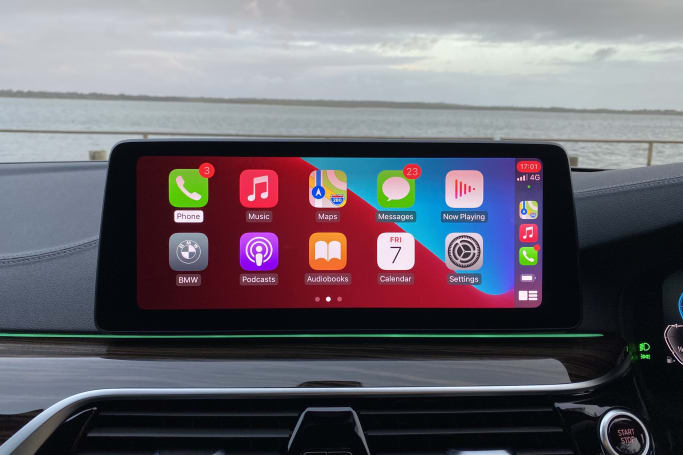
The 520e I had for the week also had the $5900 Enhance package (20-inch M alloy wheels, glass sunroof and the excellent BMW Laserlight headlights), $2300 Nappa Black leather package, comfort front seats ($500) and a built-in dash cam ($390) called BMW Drive Recorder. This brought the price up to $131,990 before on-roads. Just so you know, the Laserlights are $2400 on their own.




